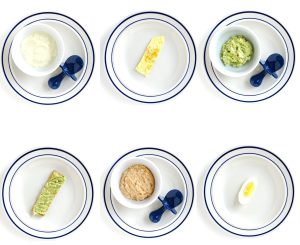When a child has a fever, we will inevitably be worried and anxious, wishing that we could relieve the child’s fever ourselves, wishing that the child’s fever could be reduced with one move. The mood is understandable, but when a child has a fever, it does not mean that the more we do, the better.
On the contrary, we often see examples of parents doing bad things with good intentions. Of course, these are extreme cases, and parents’ actions even lack basic common sense judgment. The child has a fever. What should we do at home? What should we not do? Under what circumstances should we see a doctor?
About fever
Every child will experience fever while growing up. Fever is a symptom rather than a disease. It is often a sign that a child has an infection.
A child’s normal body temperature varies with age and when the temperature is taken. When a child’s temperature exceeds 38 degrees, it is considered a fever.
It is worth noting that the temperature of a child when he or she has a fever does not directly reflect the severity of the child’s infection or disease. In other words, a higher body temperature does not mean that the child is more seriously ill. For example, a common cold can cause a high fever (38.9-40 degrees Celsius), while severe infections can sometimes lead to no fever or even hypothermia (less than 36.1 degrees Celsius).
Therefore, when a child has a fever, it is more meaningful to learn how to observe and respond to it than to just stare at the number on the thermometer. So what can we do to deal with fever scientifically?
what to do
- Take off excess clothing.
- Pay attention to fluid replenishment to avoid dehydration. You can give your child water or diluted juice.
- If the child has vomiting and diarrhea at the same time, oral rehydration salts should be considered.
- If your child has a high temperature and feels uncomfortable, you can use paracetamol or ibuprofen, whichever one you choose.
- Get enough rest.
what not to do
- It is forbidden to use aspirin to reduce fever.
- Do not try alcohol body rub or cold water bath or even ice water bath to cool down.
- Eat whatever you want and don’t force your children to eat.
- Do not try any folk remedies or secret recipes for reducing fever.
When to see a doctor
- A child under 3 months old has a body temperature exceeding 38 degrees; or an older child has a body temperature exceeding 40 degrees.
- The child’s overall condition seems to be getting worse and worse, such as becoming extremely irritable and crying incessantly.
- Along with fever, other symptoms also appear, such as:
a. A rash appears.
b. Repeated vomiting and diarrhea.
c. Symptoms of dehydration: less energetic than usual, less urine, darker urine, and no tears when crying.
d. Stiff neck: Fever accompanied by stiff neck may be an early manifestation of meningitis.
e. Recurrent fever for more than 3 days.
Every child will experience fever, and every time a child has a fever, it will test the parents. Only if we reserve more correct knowledge at ordinary times can we be able to deal with it more calmly when our children have a fever next time.




